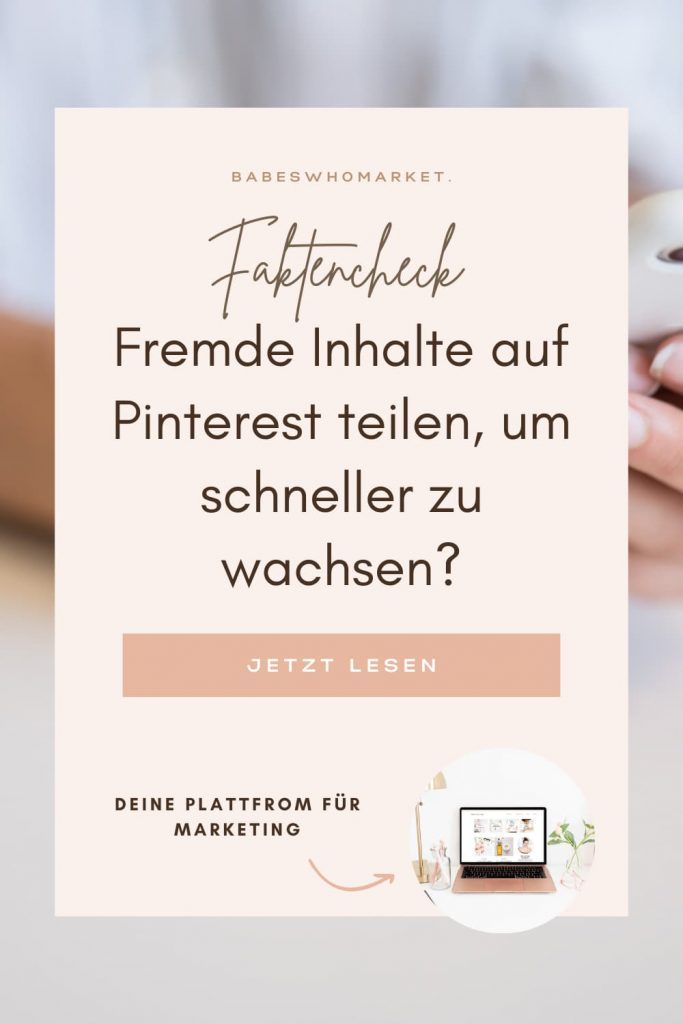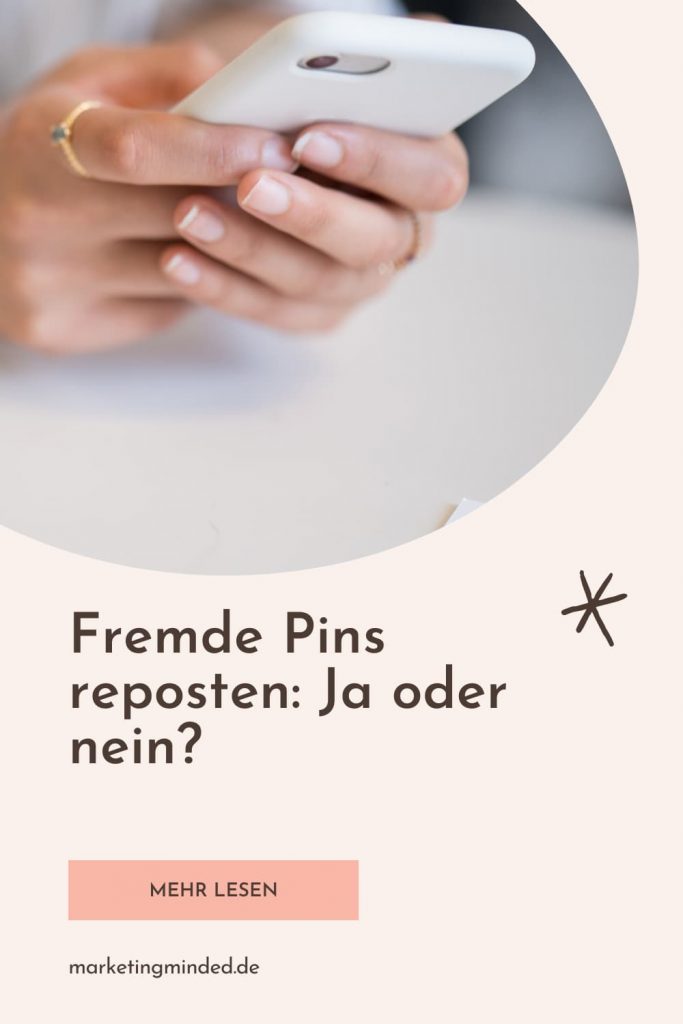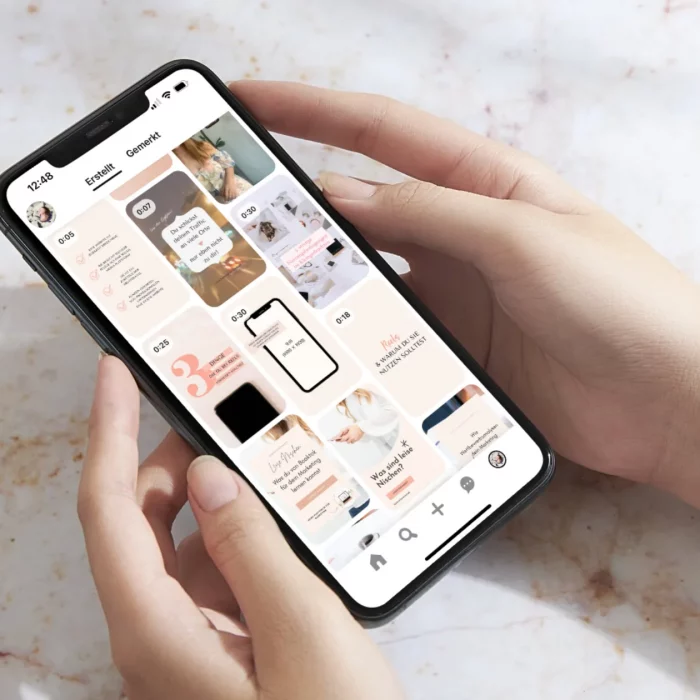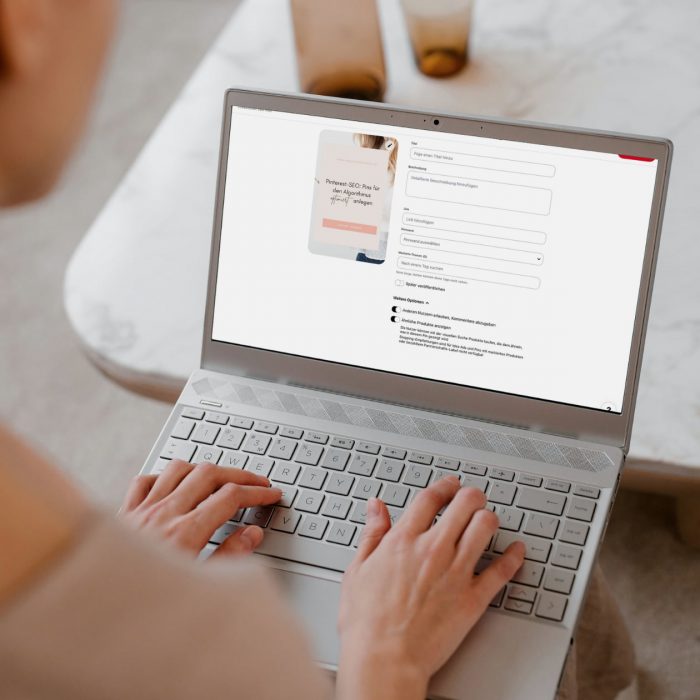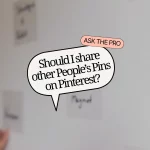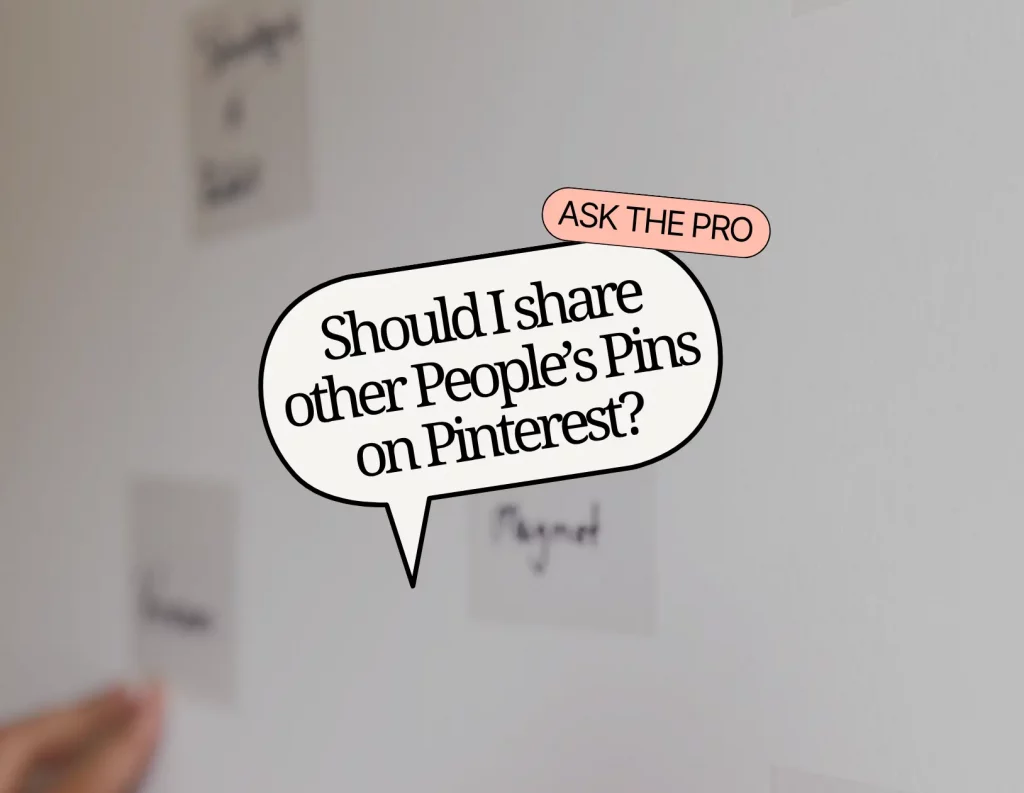
Should you share other people’s content on Pinterest to grow faster? This tactic is often recommended to beginners looking for quick wins—but if you’re serious about building sustainable growth, let’s be real: that advice is total BS. #SorryNotSorry #SorryNotSorry.
In this article, we’ll break down why repinning content won’t help your visibility—and when it might still make strategic sense to save others’ content.
Content Creation vs. Curation on Pinterest
Let’s quickly talk about how to provide your audience with relevant content. Because there are exactly two ways to do that:
Content creation means you create content yourself and share it on Pinterest. Content curation means you collect and share existing content on your own profile. Or simply put: you repost content from other accounts.
The golden rule of successful Pinterest marketing is always: focus on your own content. Before sharing other people’s content, always invest the time to create your own.
Sharing other people’s content as a growth strategy – a fact check
Beginners are often told to share others’ content to grow faster on Pinterest. The idea behind this is that you benefit from pins that are already performing well and can use their success for yourself. To not only benefit from the pin’s visibility but also redirect traffic, some even suggest changing the link and directing users to your own website.
Besides being ethically questionable – after all, you’re stealing someone else’s hard work – this tactic won’t do anything for you. Literally nothing.
Pinterest is a search engine. The platform naturally favors new, relevant, and original content. It also favors content that actually helps the user find what they were looking for. That means: If I’m searching for a wedding photographer and click on a pin only to end up on an Etsy shop selling birthday cards for kids, it’s not just completely irrelevant – Pinterest will also interpret this as a poor user experience and stop showing that pin as often.
In doing so, you’re actually turning the algorithm – and your potential clients – against yourself. And actively slowing your growth.
Why sharing other people’s content can slow down your Pinterest marketing
Okay, in the paragraph above, I’ve already explained why this “strategy” is a very bad idea if you want to grow on Pinterest. Now let’s take a more general look at the whole thing. Because when you do Pinterest marketing, you don’t just want to “grow” as quickly as possible, you also want to build trust, sell products and services, attract traffic to your site and generally just gain more visibility. Can you do all that by sharing other people’s content? Honestly: No.
Here’s a quick fact check:
You build brand trust and visibility – but not for yourself.
When you share other people’s content, you automatically and logically load someone else’s design onto your board. With every repin, you give visibility to other brands and put the focus on their branding. You help increase their recognition and reinforce their expert status – which in turn dilutes your own brand.
The point of Pinterest marketing is to guide users to you – your profile or your website. Repins always lead to the original creator of the pin (i.e. the person who created it first) – so you’re actively sending your dream clients to your competition.
When you repin, you have to carefully check the pin and the linked landing page to make sure it actually offers value to your target audience. In that time, you could easily be creating your own relevant content that truly benefits your business.
And here’s another important point why sharing others’ pins slows you down: SEO. By repinning existing content, you’re giving up the opportunity to optimize it – and missing out on better rankings and more visibility as a result.
You see: You’re curating content, spending time researching and selecting it – without really benefiting from it. The value of the repin doesn’t flow to you but only to the original creator.
Again: original content is the way to go. Always.
When it might make sense to share other people’s content
But there are a few rare, yet relevant exceptions when curating and sharing other content can be worthwhile – if it provides strategic value.
This might be the case, for example, when…
… certain content fits your brand and topic but doesn’t directly compete with your offer. If that’s the case, a repin might be valuable for your audience.
An example: if you want to redecorate your home, wall paint and wallpaper are just as important as furniture. Home décor brand Westwing understands this and occasionally shares pins about paint on a separate board. The topic is a great addition for their interior-loving audience – and these pins don’t compete with Westwing’s offer, because they don’t sell wall paint themselves.
… there’s helpful content that closely relates to your offer, but goes beyond your core expertise or isn’t something you want to cover yourself.
For example: You offer email marketing as a VA, but design isn’t your strength and you don’t offer design templates yourself. In that case, collecting high-quality newsletter templates might be a valuable resource for your audience.
… the external pins are directly connected to you and your brand.
You were a guest on a podcast, featured in a blog post, wrote a guest article, or gave an interview? All of that is technically third-party content that’s actually helpful to you. These kinds of pins strengthen your brand, highlight your expertise, and build trust with your audience. You should definitely repin those.
If you want to include third-party content in your Pinterest strategy, make sure you select it carefully and use it sparingly. Only then can repins be a strategic addition to your Pinterest marketing.
Other than these exceptions: stick to original content and create your own pins.
